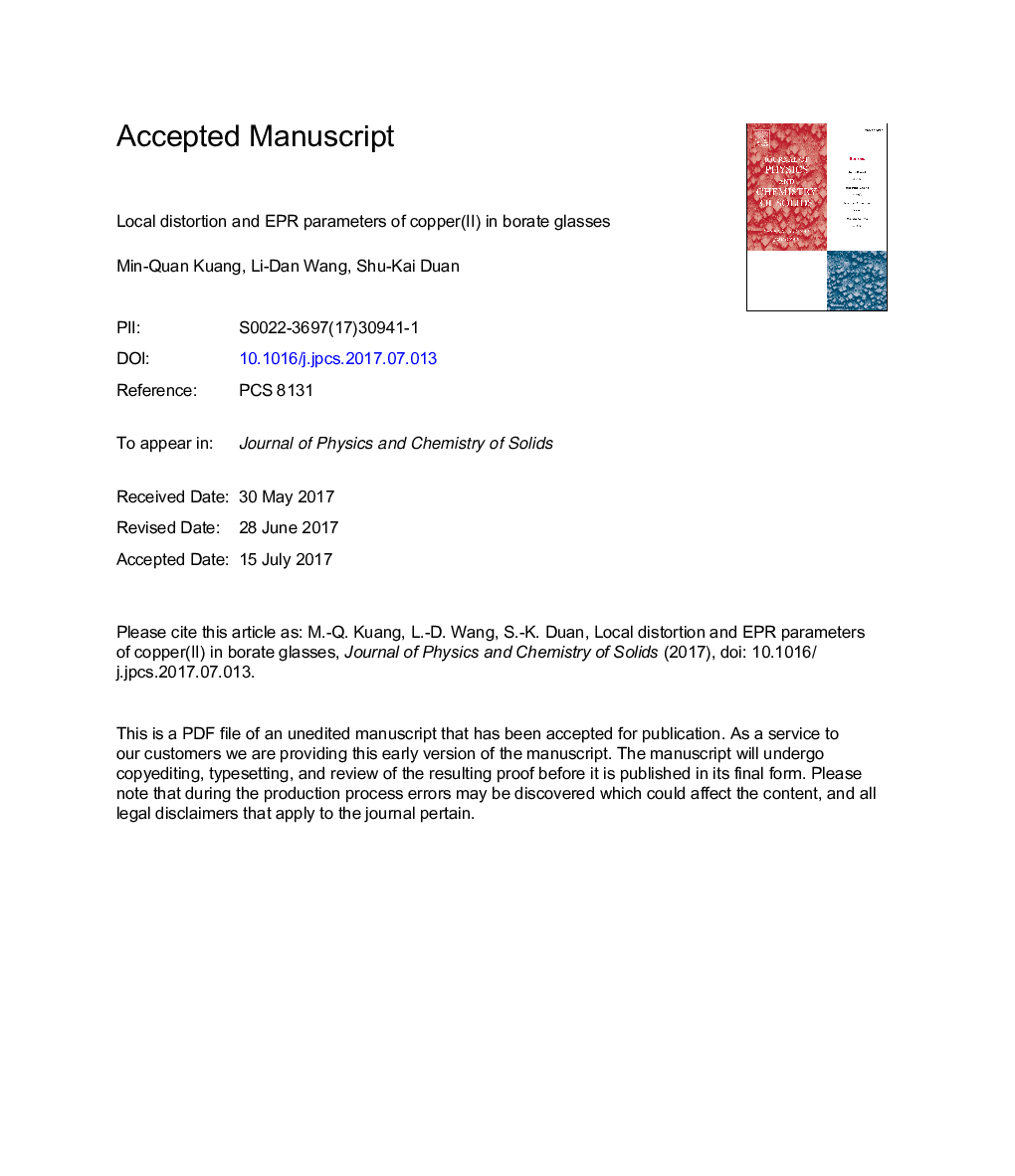| Article ID | Journal | Published Year | Pages | File Type |
|---|---|---|---|---|
| 5447301 | Journal of Physics and Chemistry of Solids | 2017 | 16 Pages |
Abstract
The EPR parameters (g and A tensors) of the paramagnetic Cu2+ sites in CaB4O7, LiCaBO3, Li2B4O7, KLiB4O7 glasses are well explained by utilizing the fourthâorder perturbation formulas for 3 d9 ions in the tetragonally elongated octahedral [CuO6]10â clusters. The magnitude of the local distortion for the [CuO6]10â clusters suffering the Jahn-Teller effect is denoted by the relative elongation ratio Ï which is proportional to the ratio Îg///Îg⥠(Îg//= g//-gs and Îgâ¥Â = gâ¥-gs). The g isotropies giso (=(g//+2gâ¥)/3) undergo an linear increase with the decline of the covalecny of the glass systems (i.e., the augment of the orbital reduction factor k). The signs of the hyperfine structure constants are determined by computing the quantitative contributions arising from the isotropic and anisotropic copper 3d-3s (4s) orbital admixtures indicated by the core polarization constant κ and the reduction factor H, respectively. The above correlations are proved to be available for analogous borate glasses doping with copper ions, e.g., MRbB4O7 (M = Li, Na and K), 90M2B4O7·9PbO·CuO (M = Li, Na and K), 10MO·30ZnO·60B2O3 (M = Mg, Ca and Sr) and xLi2O·(30-x)Na2O·69.5B2O3 (5 â¤Â x â¤Â 25 mol%), and all the results are discussed.
Related Topics
Physical Sciences and Engineering
Materials Science
Electronic, Optical and Magnetic Materials
Authors
Min-Quan Kuang, Li-Dan Wang, Shu-Kai Duan,
